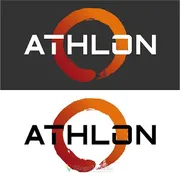AMD Athlon Silver PRO 3125GE

AMD Athlon Silver PRO 3125GE: A Budget Processor for Basic Tasks
April 2025
1. Key Specifications: Dali at the Service of Economy
The AMD Athlon Silver PRO 3125GE is positioned as a solution for office systems and compact PCs. Its Dali architecture is based on a modified version of the Zen (1st generation) microarchitecture, adapted to reduce cost and energy consumption.
- Manufacturing Process: 12 nm (GlobalFoundries) — outdated by 2025 standards but cheap to produce.
- Cores/Threads: 2/4 — multithreading is implemented via SMT (Simultaneous Multithreading).
- Frequency: Base — 3.4 GHz, Boost — 3.8 GHz.
- Cache: L3 — 4 MB (shared among all cores), L2 — 1 MB per core.
- TDP: 35 W — supports passive cooling or a small cooler.
- Graphics: Integrated Radeon™ Graphics (Vega 3) solution with 3 cores and a frequency up to 1200 MHz.
Key Features:
- Support for AMD PRO Security technologies (memory encryption, attack protection).
- Energy efficiency: ideal for mini-PCs and systems with limited cooling capabilities.
- Price: around $65 (new, 2025) — one of the most affordable processors supporting SMT.
Real-world Example: Users assembling home NAS systems based on the Athlon Silver PRO 3125GE report quiet operation and low power consumption (less than 10 W when idle).
2. Compatible Motherboards: AM4 Socket and Budget Chipsets
The processor uses the AM4 socket, ensuring compatibility with a wide range of motherboards released since 2017.
Recommended Chipsets:
- A520: Basic option (from $50). Examples: Gigabyte A520M DS3H, ASUS Prime A520M-K.
- B450/X470: For upgrading older systems (BIOS update required).
Selection Tips:
- Avoid motherboards with A320 chipsets: limited PCIe 3.0 support and no overclocking.
- Mini-ITX boards: ASRock A520M-ITX/ac is suitable for compact builds.
- Always check the list of supported processors on the manufacturer’s website! For example, some B450s require a BIOS version P5.20.
3. Memory: DDR4 and Dual-Channel Mode
The Athlon Silver PRO 3125GE only works with DDR4:
- Max Capacity: 64 GB (2 slots).
- Frequencies: Officially up to 2933 MHz, but it works stably at 3200 MHz on many boards (with XMP profile).
- Mode: Dual-channel is mandatory — use 2 identical modules (for example, 2x8 GB DDR4-3200).
Tip: For office tasks, 8 GB is sufficient, but for Windows 11 and multimedia, 16 GB is better. Budget modules like Kingston Fury Beast (2x8 GB DDR4-3200 — $45) are an optimal choice.
4. Power Supply: Minimum Requirements
With a TDP of 35 W, the processor doesn't require a powerful PSU:
- Minimum: 300 W (for example, EVGA 300 BR — $35).
- Recommendation: 400–450 W with an 80+ Bronze certification (Be Quiet! System Power 10 — $55). This would provide headroom for future upgrades (such as adding an entry-level graphics card).
Important: For passive systems (without discrete graphics), a 150 W power supply will suffice, but such models are rare in retail.
5. Pros and Cons: Who is it For, and Who Should Consider Ryzen
Pros:
- Price: cheaper than many competitors (Intel Celeron G6900 — $75).
- Energy efficiency: suitable for mini-PCs and "green" builds.
- Integrated graphics: sufficient for YouTube 4K and older games.
Cons:
- 2 cores: multitasking is limited (for example, working simultaneously with a browser and Excel may lead to stuttering).
- Weak upgrade potential: the AM4 socket is becoming outdated; transitioning to AM5 will require a motherboard and memory replacement.
6. Use Cases: From Office to Retro Gaming
- Office Tasks: Word, Excel, browser with 10+ tabs.
- Multimedia: Streaming video (Netflix 4K), music, light editing in Shotcut.
- Gaming: CS:GO (60 FPS at low settings), Dota 2 (720p, medium settings), retro gaming through emulators (PS2, GameCube).
- Servers: NAS, home smart home server (Home Assistant).
Real-world Example: In 2024, a user built a media center on Athlon 3125GE with 16 GB of RAM and a 512 GB SSD. The system runs Kodi, a torrent client, and a VPN without lag.
7. Comparison with Competitors: Intel vs AMD
Intel Celeron G6900 ($75):
- Pros: 2 cores (without Hyper-Threading), higher IPC.
- Cons: No SMT, weaker UHD 710 graphics compared to Vega 3.
AMD Ryzen 3 5300GE ($110):
- Pros: 4 cores/8 threads, Zen 3, Vega 6.
- Cons: 1.5 times more expensive.
Conclusion: The Athlon 3125GE outperforms the Celeron due to multithreading, but for gaming and serious work, it’s better to spend extra on Ryzen 3.
8. Practical Assembly Tips
- Case: Mini-ITX (Cooler Master Elite 110 — $50) or compact micro-ATX.
- Storage: An SSD is essential (Kingston A400 480 GB — $35).
- Cooling: The stock cooler is sufficient, but for quiet operation, consider the Noctua NH-L9a ($45).
- Assembly: Check if dual-channel memory mode is enabled in the BIOS!
9. Final Thoughts: Who is the Athlon Silver PRO 3125GE For?
This processor is ideal for those who:
- Are building an office PC or a home media center.
- Are looking for an energy-efficient solution for 24/7 operation.
- Are on a budget ($200–300 for the entire build).
Why this one? For $65, you get decent performance, protection from PRO technologies, and the ability to build a system without a dedicated graphics card. However, for gaming, editing, or working with "heavy" applications, it’s better to consider Ryzen 3/5 or Intel Core i3.
Prices are valid as of April 2025.
Basic
CPU Specifications
Memory Specifications
GPU Specifications
Miscellaneous
Benchmarks
Compared to Other CPU
Share in social media
Or Link To Us
<a href="https://cputronic.com/index.php/cpu/amd-athlon-silver-pro-3125ge" target="_blank">AMD Athlon Silver PRO 3125GE</a>